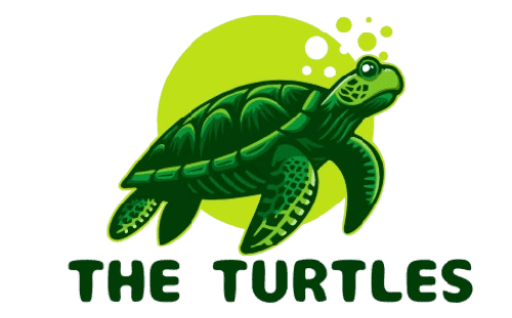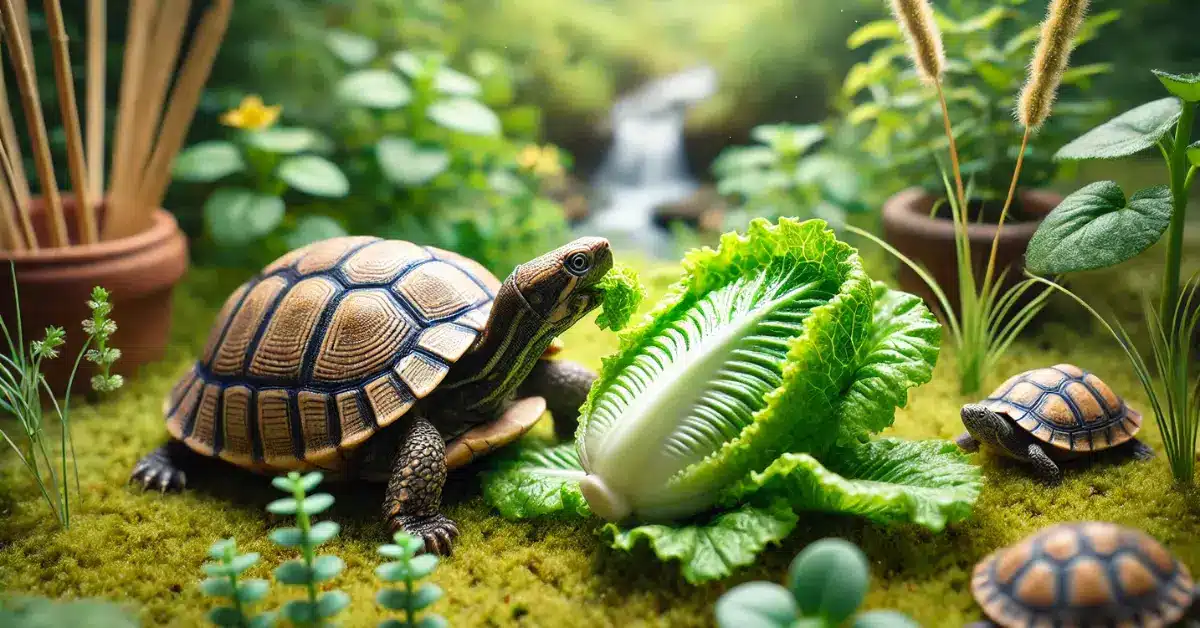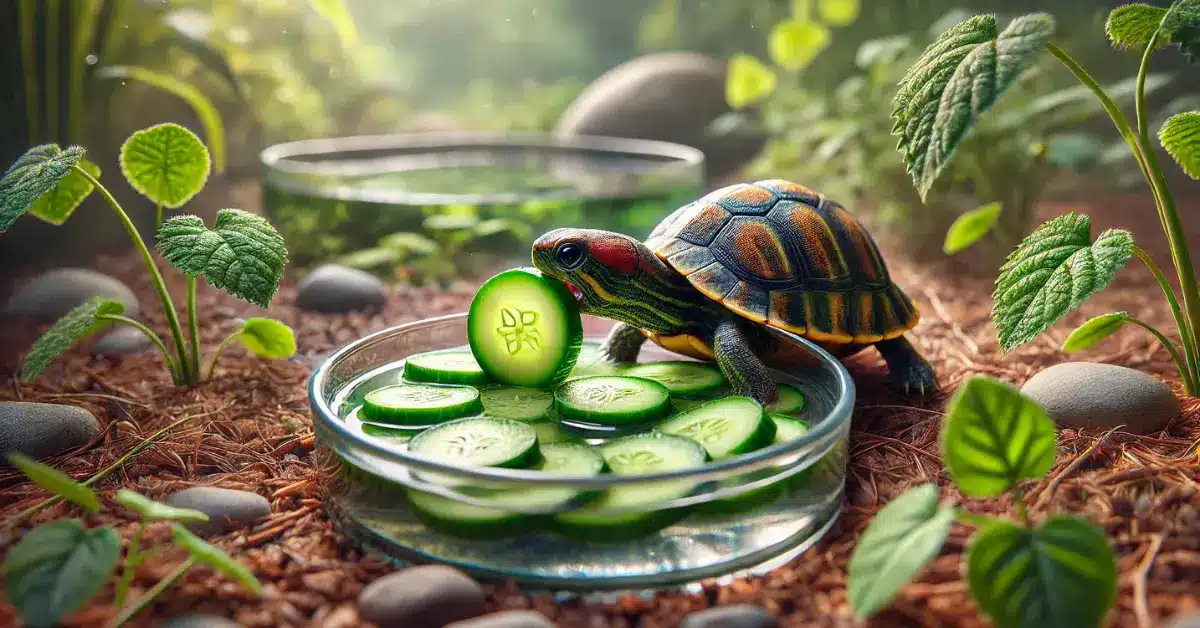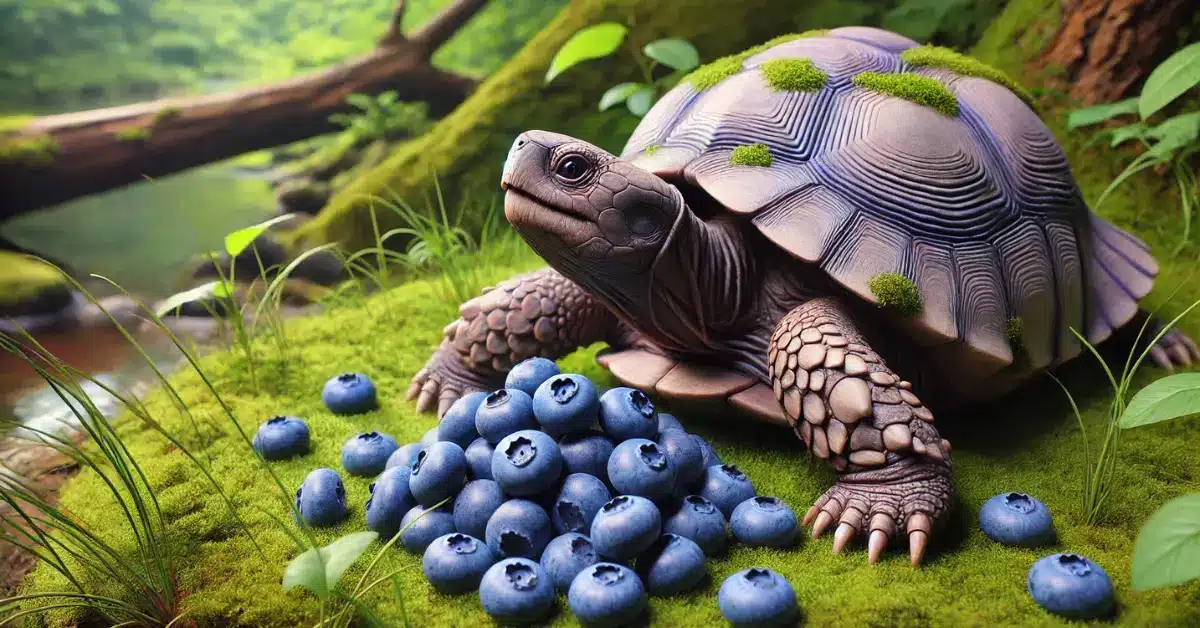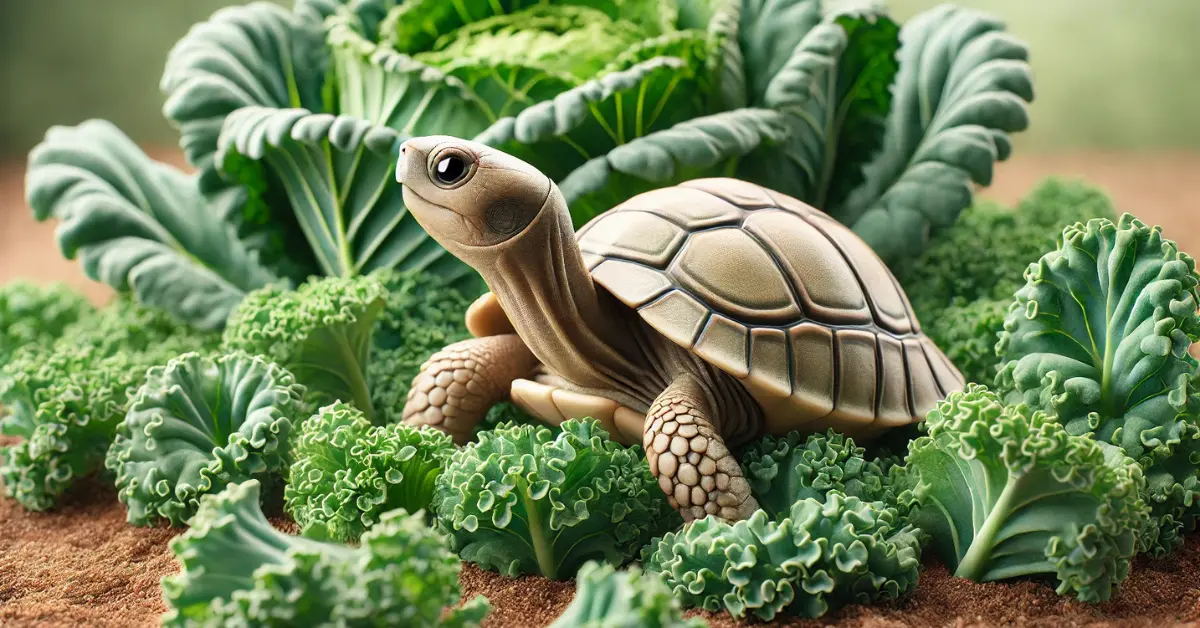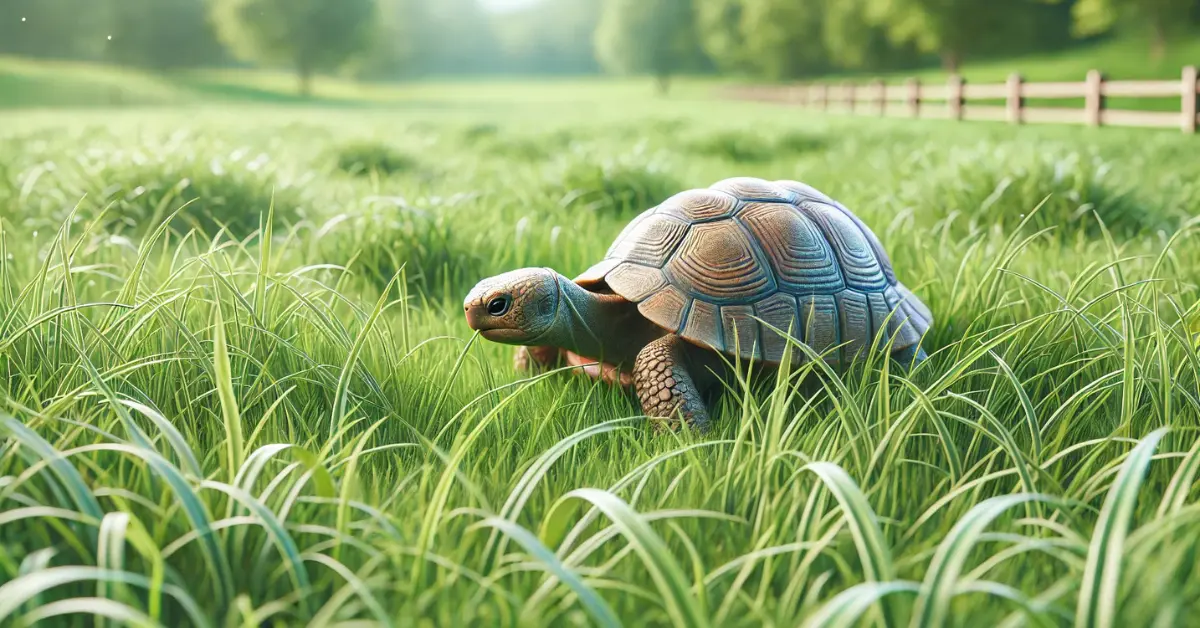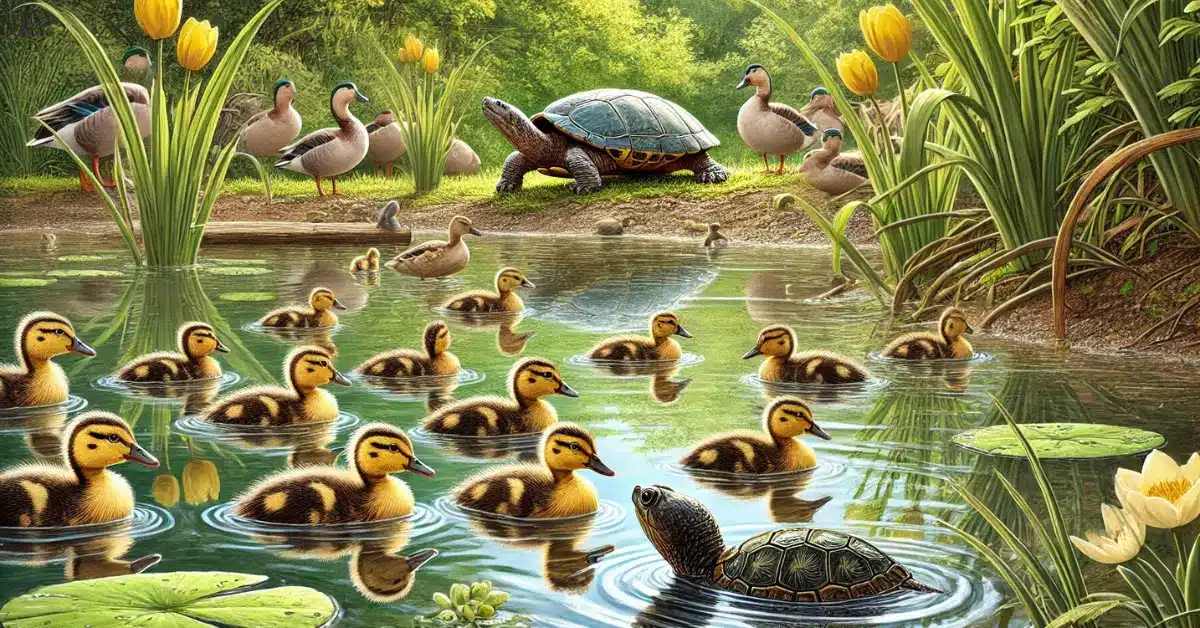Welcome to the fascinating world of mud turtles! Ever wondered “What Do Mud Turtles Eat?” These incredible reptiles might not be the most famous, but their diet plays a crucial role in their health and the balance of their environment. Dive in to discover what makes up their diet and why understanding it is key to their survival and well-being.
Table of Contents
ToggleThe Amazing World of Mud Turtles
Why Their Diet Matters
Mud turtles might not be the most famous reptiles, but they are important to their environment. Knowing what they eat helps us understand why they matter and how to keep them safe. Mud turtles eat both plants and small animals. This helps them stay healthy and keeps their home in balance.
Meet the Mud Turtle: A Closer Look
What They Look Like
Mud turtles are small to medium-sized. They have smooth, dark brown or olive shells. Their legs and head often have patterns that help them hide. Unlike some turtles, mud turtles have a slim body that helps them swim well.
Where They Live
Mud turtles live in swamps, marshes, and slow-moving streams. They like places with lots of plants and soft mud because it gives them food and places to hide. You can find them in the southeastern United States, from the Atlantic coast to the Mississippi River.
What They Do
Mud turtles are usually shy and like to stay hidden. They are most active when it’s warm, searching for food. They also dig into the mud or hide underwater to stay safe from predators. This behavior helps them stay healthy and safe in their natural homes.
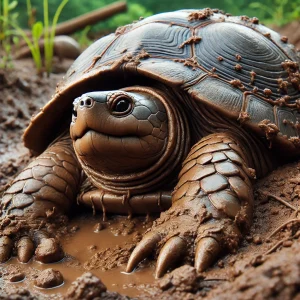
The Mud Turtle’s Natural Diet
Omnivorous Nature
Mud turtles are omnivores, which means they eat both plants and animals. This mixed diet helps them stay healthy and thrive in their environment. Eating a variety of foods provides the nutrients they need to grow and stay strong.
Aquatic vs. Terrestrial Food Sources
Mud turtles find food both in the water and on land. In the water, they hunt for small fish and insects. On land, they munch on plants and small creatures like worms. This helps them get a balanced diet and stay well-nourished.
Aquatic Delicacies: What’s on the Menu?
Small Fish and Minnows
Mud turtles enjoy snacking on small fish and minnows. These tiny fish are easy to catch and provide a good source of protein. They help the turtles stay strong and active.
Aquatic Insects and Larvae
Mud turtles also eat aquatic insects and their larvae. These critters live in the water and offer essential vitamins and minerals. Eating them helps the turtles stay healthy and energetic.
Crustaceans: Crayfish and Shrimp
Crayfish and shrimp are a favorite treat for mud turtles. These crustaceans are rich in nutrients and provide a tasty meal. They are also an important part of the turtles’ diet.
Mollusks: Snails and Clams
Mud turtles munch on snails and clams as well. These mollusks have hard shells, but mud turtles are skilled at getting to the soft, edible parts inside. They offer a good source of calcium, which is important for strong shells and bones.
Land-Based Treats: Foraging on Shore
Earthworms and Terrestrial Insects
On land, mud turtles search for earthworms and insects. Earthworms are rich in nutrients, while insects provide a tasty snack and essential vitamins. These treats help the turtles stay healthy and active when they venture out of the water.
Vegetation and Fruits
Mud turtles also enjoy munching on plants and fruits. They eat leaves, grasses, and fruits they find near the water. These plant-based foods offer important vitamins and minerals that keep them strong and healthy.
Carrion: Nature’s Cleanup Crew
Mud turtles sometimes feed on carrion, which is dead animals they find. This might sound unusual, but it helps keep their habitat clean. Eating carrion provides extra nutrients and helps the turtles maintain a balanced diet.
Seasonal Changes in Mud Turtle Diets
Spring Awakening: Increased Protein Intake
In spring, mud turtles become more active and increase their protein intake. They eat more insects, fish, and other protein-rich foods to boost their energy after winter. This helps them get ready for the busy months ahead.
Summer Abundance: Diverse Food Options
During summer, food is plentiful. Mud turtles enjoy a variety of foods, from aquatic insects to fruits and plants. This diverse diet helps them stay healthy and strong as they spend more time foraging and exploring.
Fall Preparation: Building Fat Reserves
In fall, mud turtles start to eat more to build up fat reserves. This extra fat helps them survive the colder months when food is less available. They focus on high-energy foods to prepare for winter.
Winter Slowdown: Reduced Feeding
In winter, mud turtles slow down and eat less. They become less active and rely on their fat reserves to get through the cold months. They may only eat occasionally if the weather warms up enough.
The Hunter’s Arsenal: How Mud Turtles Catch Their Prey
Powerful Jaws and Sharp Beak
Mud turtles use their powerful jaws and sharp beak to catch and eat their prey. Their jaws can clamp down with strong force, making it easy to grab small fish, insects, and other food. Their beak helps them tear apart food and handle tough, hard-to-crack items like snails and clams.
Ambush Tactics in Murky Waters
In the water, mud turtles are skilled ambush predators. They wait quietly in murky waters, hiding among plants and mud. When a fish or insect comes close, they strike quickly and snatch their meal. This tactic helps them catch prey that might otherwise escape.
Scavenging Behavior
Mud turtles are also scavengers. They search for dead animals and leftover food, which provides additional nutrients. This behavior helps them make the most of their environment and find extra food sources when prey is scarce.
Mud Turtles in Captivity: Feeding Guidelines
Replicating Natural Diets
For mud turtles in captivity, it’s important to mimic their natural diet. Provide a mix of protein sources, such as small fish and insects, along with plant matter like leafy greens and fruits. This variety ensures they get all the nutrients they need to stay healthy.
Commercial Turtle Foods and Supplements
You can also use commercial turtle foods and supplements to support their diet. Choose high-quality foods designed for omnivorous turtles and follow the instructions for proper use. Supplements can help fill in any nutritional gaps and keep your turtle in good shape.
Feeding Frequency and Portion Control
Feed captive mud turtles regularly but avoid overfeeding. Offer food several times a week, depending on their age and size. Control portion sizes to prevent obesity and ensure they get a balanced diet. Monitor their health and adjust their feeding schedule as needed.
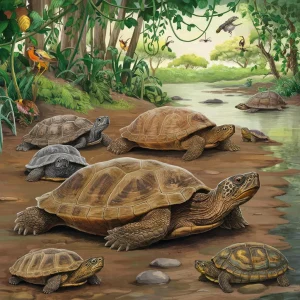
Environmental Impacts on Mud Turtle Diets
Habitat Loss and Food Scarcity
When mud turtles lose their homes, they also lose access to food. Building and developing wetlands and marshes can make it hard for turtles to find the plants and animals they need to eat. This can lead to food shortages and make it tough for turtles to stay healthy.
Water Pollution and Its Effects on Prey
Polluted water can harm the small fish, insects, and plants that mud turtles eat. Chemicals and trash in the water can make these food sources unsafe. When turtles eat polluted prey, it can make them sick and upset the balance of their diet.
Climate Change and Shifting Food Sources
Climate change can change the availability of food for mud turtles. Shifts in temperature and weather can alter the types and amounts of food found in their habitats. Turtles might have to find new food sources or travel farther to get what they need.
Conservation Efforts: Protecting Mud Turtles and Their Food Web
Habitat Preservation Initiatives
To help mud turtles, we need to protect their homes. This means keeping wetlands and marshes safe from development and pollution. By preserving these areas, we ensure that turtles have the space and food they need to survive.
Water Quality Improvement Programs
Cleaning up water and reducing pollution is important for the health of mud turtles and their food. Programs that work to make water cleaner help keep the ecosystem healthy. Cleaner water means safer food and a better environment for turtles.
Public Education and Awareness
Teaching people about mud turtles and why they are important can help a lot. By raising awareness about protecting habitats and keeping water clean, we can support efforts to save these turtles. When people understand and care, they can help make a difference.
Read more: What Do Musk Turtles Eat?
Conclusion
In this blog, we learned about mud turtles and answered the question, “What Do Mud Turtles Eat?” We saw that mud turtles eat a variety of foods, including small fish, insects, and plants. Understanding their diet helps us see why it’s important to protect them.
Mud turtles face challenges like losing their homes and polluted water, which can affect their food and health. By helping with conservation efforts and teaching others about mud turtles, we can make sure these amazing reptiles stay healthy and safe.
For more information about mud turtles and how you can help, visit theturtles.info. Your support can make a big difference in keeping these turtles and their homes safe.
FAQs About What Do Mud Turtles Eat?
1. What is the diet of a mud turtle?
Mud turtles are omnivores; they eat both plants and animals. Their diet includes small fish, insects, aquatic plants, and land-based foods like earthworms and fruits.
2. Do mud turtles eat the same food in water and on land?
No, mud turtles eat different foods in water and on land. In water, they enjoy small fish, aquatic insects, and crustaceans. On land, they eat earthworms, insects, and various plants.
3. What kinds of aquatic animals do mud turtles eat?
Mud turtles eat a variety of aquatic animals, including small fish, minnows, aquatic insects, larvae, crayfish, shrimp, and mollusks like snails and clams.
4. What land-based foods do mud turtles eat?
On land, mud turtles eat earthworms, insects, and vegetation. They also enjoy fruits and sometimes feed on carrion, which are dead animals they find.
5. How does climate change affect what mud turtles eat?
Climate change can change the types and amounts of food available to mud turtles. Shifts in temperature and weather can affect the food supply in their habitats, making it harder for them to find the food they need.
6. How do mud turtles catch their food?
Mud turtles use their strong jaws and sharp beak to catch and eat their prey. They also use ambush tactics in the water, hiding and waiting for prey to come close before striking quickly.
7. What can I do to help mud turtles with their diet?
To help mud turtles, you can support conservation efforts that protect their habitats and improve water quality. Educating others about the importance of preserving these environments can also make a big difference.
8. Can mud turtles eat commercial turtle food?
Yes, mud turtles can eat commercial turtle foods and supplements. These should be high-quality and designed for omnivorous turtles to ensure they get a balanced diet.
